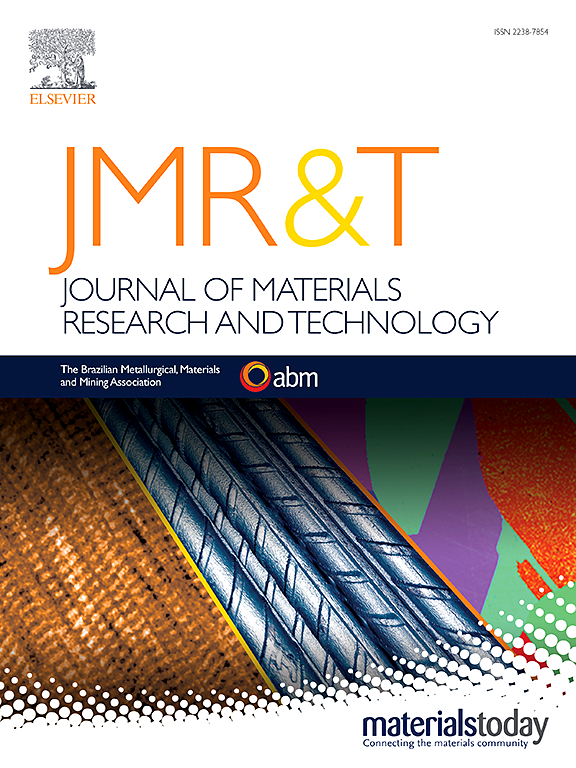Microstructure evolution and mechanical properties of cold rolled Ti–Mo precipitation-hardened stainless steels after ageing treatment
IF 6.2
2区 材料科学
Q1 MATERIALS SCIENCE, MULTIDISCIPLINARY
Journal of Materials Research and Technology-Jmr&t
Pub Date : 2025-06-06
DOI:10.1016/j.jmrt.2025.06.041
引用次数: 0
Abstract
While cold deformation prior to aging is a well-established approach for enhancing the mechanical properties of precipitation-hardened stainless steels (PHSSs), the synergistic effect of cold deformation and aging on microstructural evolution remains insufficiently explored. To investigate this effect, different levels (35 % and 70 %) of cold deformation strain (CDS) were applied, followed by aging at low (520 °C) and high (640 °C) temperatures, leading to variations in the formation of reverted austenite within the Ti–Mo PHSS. Regardless of the CDS, reverted austenite was observed only when aging was performed at 640 °C, while no significant austenite reversion occurred at 520 °C. Therefore, only aging was conducted at 640 °C, the trade-off relationship between strength and ductility improved with increasing CDS. This improvement was primarily due to the simultaneous formation of a higher density of η-Ni3Ti precipitates and reverted austenite during aging. These results indicate that optimizing metallurgical parameters can further enhance the mechanical performance of Ti–Mo PHSS, particularly by leveraging the effects of cold deformation strain and aging temperature on austenite reversion and precipitation behavior.
时效处理后冷轧Ti-Mo析出硬化不锈钢的组织演变与力学性能
虽然在时效之前进行冷变形是提高析出硬化不锈钢(phss)力学性能的一种行之有效的方法,但冷变形和时效对微观组织演变的协同效应仍未得到充分的探讨。为了研究这种影响,施加不同水平(35%和70%)的冷变形应变(CDS),然后在低(520°C)和高(640°C)温度下时效,导致Ti-Mo PHSS内还原奥氏体形成的变化。无论CDS如何,只有在640°C时效时才观察到奥氏体的还原,而在520°C时效时没有出现明显的奥氏体还原。因此,仅在640℃时效,强度与延性之间的权衡关系随着CDS的增加而改善。这种改善主要是由于在时效过程中同时形成了密度更高的η-Ni3Ti析出相和还原奥氏体。这些结果表明,优化冶金参数可以进一步提高Ti-Mo PHSS的力学性能,特别是利用冷变形应变和时效温度对奥氏体还原和析出行为的影响。
本文章由计算机程序翻译,如有差异,请以英文原文为准。
求助全文
约1分钟内获得全文
求助全文
来源期刊

Journal of Materials Research and Technology-Jmr&t
Materials Science-Metals and Alloys
CiteScore
8.80
自引率
9.40%
发文量
1877
审稿时长
35 days
期刊介绍:
The Journal of Materials Research and Technology is a publication of ABM - Brazilian Metallurgical, Materials and Mining Association - and publishes four issues per year also with a free version online (www.jmrt.com.br). The journal provides an international medium for the publication of theoretical and experimental studies related to Metallurgy, Materials and Minerals research and technology. Appropriate submissions to the Journal of Materials Research and Technology should include scientific and/or engineering factors which affect processes and products in the Metallurgy, Materials and Mining areas.
 求助内容:
求助内容: 应助结果提醒方式:
应助结果提醒方式:


